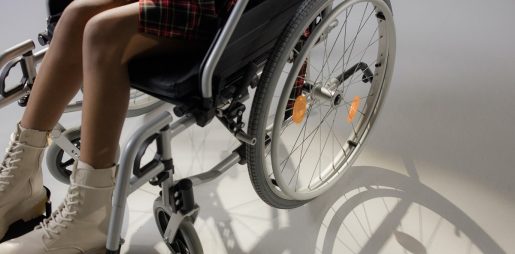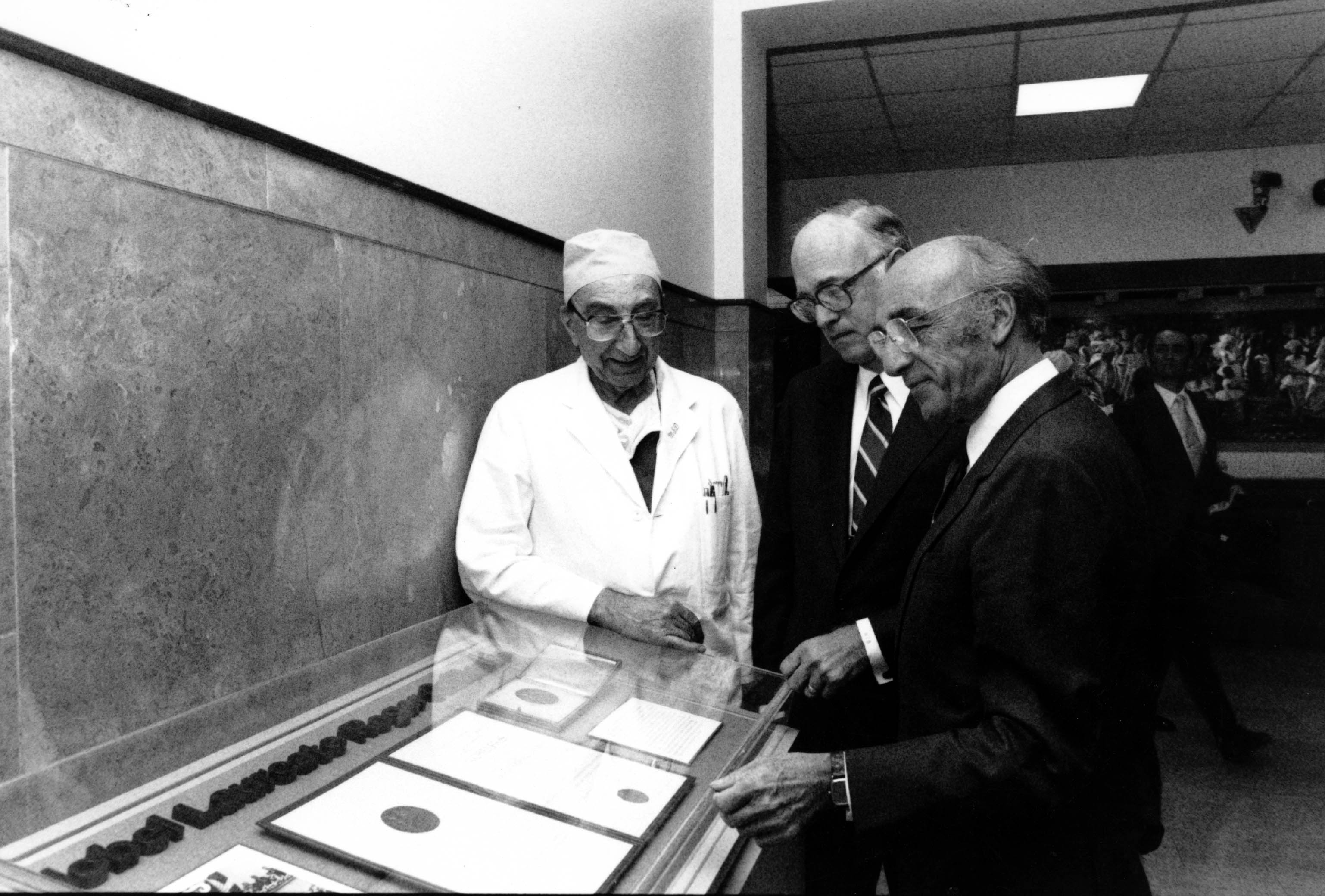Baylor College of Medicine researchers set the foundation for novel rare disease treatment
 For people living with arginase deficiency, a condition without an effective treatment, it is good news that a new therapy that offers dramatic improvement for patients with the condition has been approved for use in Europe and is currently following the process for approval in the U.S.
For people living with arginase deficiency, a condition without an effective treatment, it is good news that a new therapy that offers dramatic improvement for patients with the condition has been approved for use in Europe and is currently following the process for approval in the U.S.
Developing new treatments for patients begins in the research lab and typically follows a long road, sometimes with surprising twists and turns. On this occasion, From the Labs learned that research conducted 10 years ago by Dr. Brendan Lee and Dr. Lindsay Burrage at Baylor College of Medicine and their collaborators had set the foundation for this new treatment that can bring significant changes in patients’ lives.
Wanting to learn more about the story behind the discovery, From the Labs met with Lee and Burrage. Their accounts revealed that scientific discoveries can sometimes happen in unexpected ways.
FTL: Dr. Lee, what is arginase deficiency?
Lee: Arginase deficiency is a rare genetic disease caused by the absence of arginase 1, a urea cycle enzyme that converts the amino acid arginine to ornithine. When the body cannot process arginine, it accumulates in the blood. Researchers believe that having high levels of arginine contributes to the neurological features observed in people with the disease, namely spastic diplegia, a chronic condition in which the muscles of the legs, hips and pelvis are constantly very stiff or tight, which makes it very difficult, sometimes impossible, to walk without assistance. The condition starts in infancy and develops progressively as the child grows. Although the neurological symptoms observed in arginase deficiency remind us of cerebral palsy, it’s important to note that only some forms of cerebral palsy are caused by arginase deficiency and would benefit from treatments that target this deficiency. Patients with cerebral palsy would need to be tested for blood arginine levels to determine whether arginase deficiency is involved in their condition.
FTL: What prompted your interest in studying arginase deficiency?
Lee: Urea cycle disorders (UCDs) like arginase deficiency have a very long and well-recognized history at Baylor that began with the founders of my department, now called Department of Molecular and Human Genetics. Members of the department have been leaders in the study of urea cycle disorders since the department’s beginnings. The urea cycle is the main chemical pathway that handles protein in our body. When we eat too much protein, more than our bodies need, the urea cycle handles the excess converting it into urea. The kidneys remove the urea from the blood and excrete it in the urine, detoxifying the body. Arginase 1, the enzyme patients with arginase deficiency lack, is part of the urea cycle, so this condition is of great interest to our group. We are a major Center for these patients. We are part of the Urea Cycle Disorders Consortium (UCDC), an NIH-funded Rare Diseases Clinical Research Network Consortium dedicated to improve the lives of patients and families affected by these disorders.
Lee established the UCDC 20 plus years ago as part of the first national group that studied UCDs. Currently, Baylor professor Dr. Sandesh Nagamani is one of the Consortium’s principal investigators and Dr. Burrage is principal investigator at Baylor’s site. Historically, Baylor’s Department of Molecular and Human Genetics has evolved into an important leader in the UCDC.
FTL: What happened 10 years ago that led you to try a novel approach to reduce the levels or arginine in this condition?
Lee: We believed that having high levels of arginine contributed to the development of the muscle stiffness and difficulty walking and that reducing those levels in patients would alleviate the symptoms, but the available treatments were not very effective. The new idea of how to reduce arginine levels came to me in an unexpected way.
I was a Cancer Prevention and Research Institute of Texas (CPRIT) investigator attending a CPRIT meeting, a cancer meeting unrelated to urea cycle conditions, when I came across a poster in which the researchers were assessing the value of arginase to fight cancer. The cancer they were working with required arginine to grow, so the idea was to deprive the cancer of arginine by administering arginase to break it down. I thought, would this approach work for arginase deficiency? Arginase in the urea cycle works inside liver cells. Would directly delivering arginase into the blood to reduce arginine levels prove to be beneficial?
I talked about this idea with Dr. Burrage, who now is an independent faculty member at Baylor. At the time, she was a fellow in my lab working on urea cycle and other metabolic diseases.
We already had mouse models of arginase deficiency, so we decided to test the effect of arginase in these mice.
FTL: Dr. Burrage, how did you test this idea?
Burrage: We began a collaboration with the group working with arginase in cancer that had inspired our idea. We administered the enzyme intraperitoneally and found that it lowered the blood arginine levels in our two mouse models of arginase deficiency.
As elevated arginine and its metabolites in the blood are believed to contribute to the neurologic features in arginase deficiency, we were optimistic that this therapy might do the same in people with arginase deficiency. We reported our findings in Human Molecular Genetics in 2015.
Lee: It was the good fortune of seeing this opportunity in a whole different context. You don’t go to a cancer meeting to find ways to treat high arginine levels, you go to a cancer meeting to find ways to treat cancer. But from this fortuitous encounter, we got an idea for treating a different disease that affects the nervous system. The idea to treat cancer with arginase did not work, but our study with the arginase deficiency animal models showed promise and the company involved in the cancer study decided to pursue our approach to treat arginase deficiency. A few years later a product was available for testing in clinical trials.
FTL: What did the human clinical trials show?
Lee: Although we were not part of the clinical trials, we followed them closely as we knew some of the participating patients. The trials showed that directly delivering arginase also brought down blood arginine levels in patients, as we had seen in the mouse models. Importantly, bringing down arginine significantly restored some of the lost motor functions in patients, which resulted in improved quality of life. A big positive change for the patients. We were very excited about this; we did not think that the symptoms would be reversible. When the arginase treatment stopped, however, walking progressively became difficult again, showing the value of arginase to treat the condition.
When I saw the clinical trials results, I thought, ‘This is why you do research.’
FTL: This work by your group set the foundation that led to this new treatment. What are your thoughts about this?
Lee: It brings great satisfaction that this research work by our group drove the subsequent steps leading to a novel treatment for arginase deficiency that reduces the high arginine levels to a point that permits recovery of neurological functions in these patients, something you don’t often expect in neurological conditions. We hope that the treatment will soon be approved for use in the U.S.
Burrage: We are thrilled that our work contributed to the development of his new therapy, and I am grateful to Dr. Lee for giving me the opportunity to pursue this work. I would like to also acknowledge other contributors from Baylor including Dr. Qin Sun, Dr. Sarah H Elsea, Dr. Sandesh Nagamani, and Ming-Ming Jiang.. In addition, I would like to acknowledge and thank the National Urea Cycle Disorders Foundation and the NIH-funded Urea Cycle Disorders Consortium for supporting me through fellowships to pursue this project.
FTL: Thank you!

Chair of the Department of Molecular and Human Genetics
Robert and Janice McNair Endowed Chair and professor of molecular and human genetics
Member of the Dan L Duncan Comprehensive Cancer Center
Baylor College of Medicine
Associate professor of molecular and human genetics
Baylor College of Medicine
Follow From the Labs on X @BCMFromtheLabs and Instagram!




